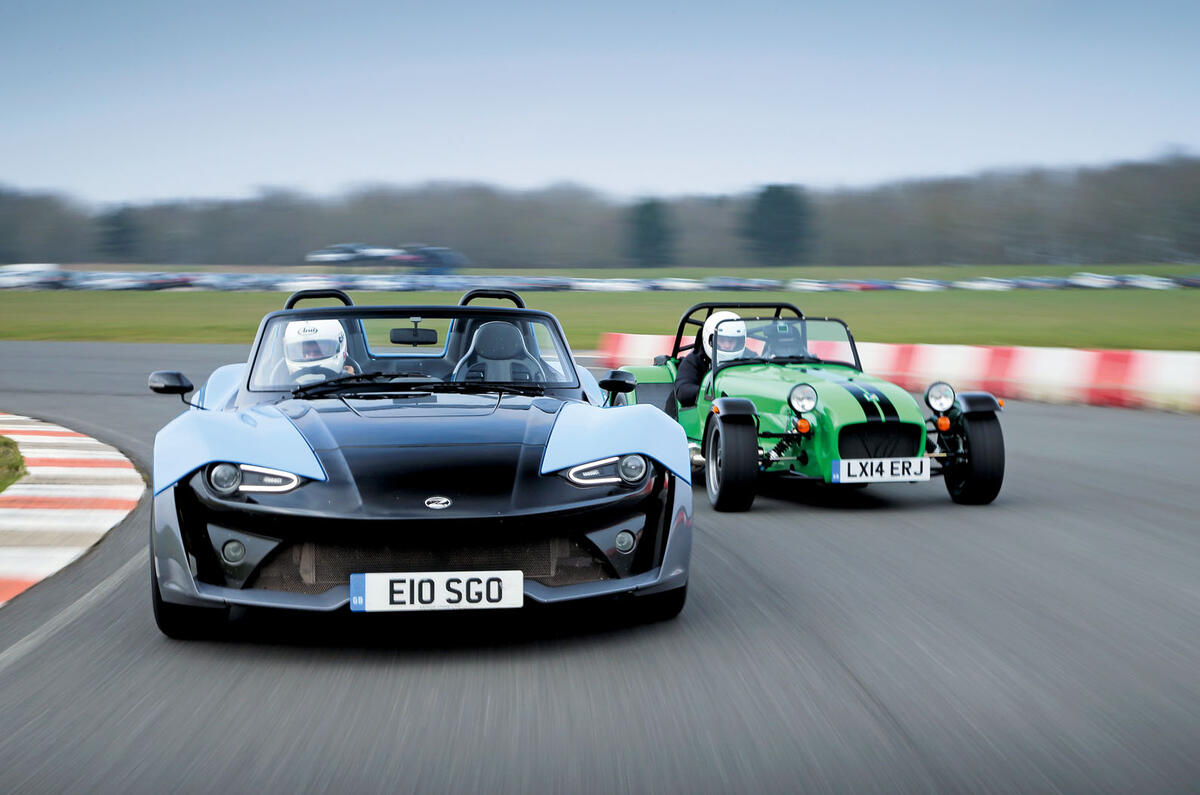Cars are inanimate. They do not have personalities. That’s why suggestions in magazine stories that you’re about to read a grudge match between sparring protagonists is, on the whole, utter drivel. The cars don’t care, because they’re unable to. They’re just cars.
The people who make cars, though? Now that’s a different matter, and there’s form here. The sleeker of the two cars you see here is a Zenos E10 S. It’s new from the ground up, as is the company, but in co-founders Ansar Ali and Mark Edwards, there is a back story.
They were, respectively, CEO and COO of Caterham Cars, which makes the fact that a Caterham Seven 360R sits alongside the E10 a particularly interesting proposition. There are closer mechanical matches to the E10: a Lotus Elise has a more similar layout, but Lotus couldn’t arrange us a car and, besides, we’re happier for this story to have a little edge.
Edwards and Ali were executives at Lotus, too, and the Zenos is built in Norfolk. So perhaps it’s no surprise that there are similarities in layout between the Zenos and Lotus. The E10, like an Elise, has its engine in the middle and is a two-seat roadster with double wishbones all around and unassisted steering.
There’s aluminium in both, too, but less in the Zenos. Instead of an extruded and bonded aluminium monocoque, the E10 has an aluminium central spine – not unlike the early Lotus Elan. But to add stiffness, Zenos has specified a carbonfibre-reinforced plastic composite for the passenger tub. Sounds expensive.
But here’s the thing: it’s made from recycled carbonfibre – offcuts from virgin carbonfibre production, in effect. They lose the large-sheet stiffness but retain 70% of pure carbonfibre’s strength, at only 10% of the cost.
Read the full Zenos E10 S review
And cost is at the core of everything Zenos does. There are plenty of would-be manufacturers who have made a pure and brilliant sports car. But the maker is the only one who ever wants to own one and the price is off the scale. The Zenos isn’t like that at all. It’s built to its price, and Ali and Edwards are unashamed about it.
In its middle, then, is a 2.0-litre Ford Ecoboost engine, turned around from its Ford application to drive the rear wheels. The six-speed gearbox is the same; the driveshafts, too. It even has Ford wheel carriers.
At the front, things are simple. The suspension is mounted directly to the central spine, so there’s no front subframe assembly to add cost. That makes the wishbones long, so there are pushrods and inboard dampers, reducing unsprung mass a bit and protecting the dampers from damage.







































































Join the debate
Add your comment
I liked reading this article
A great first car from zenos but...
now that is what i call a business model